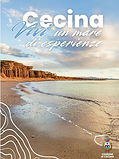Guest House BENVENUTI a Cecina
Casa Vacanze Toscana
Guest House BENVENUTI
a Cecina
Casa vacanze in Toscana
Appartamento in affitto per brevi soggiorni

Aggiornato Sabato 25 ottobre 2025
BOLGHERI
... "The cypress trees that in Bolgheri are high and blunt
Van from San Guido in double filar,
Almost running, young giants,
They jumped up and looked at me. "... Giosuè Carducci




Bólgheri is a fraction of the municipality of Castagneto Carducci which is located a few kilometers north-west of the capital and fourteen kilometers from the Guest House WELCOME to Cecina.
It rises in the center of the Livornese Maremma, on the last layers of the Metalliferous Hills.
«Gherardesca and Bolgheri. In the past it brought this double name one of the Communities of the Pisan Maremma, now distinct from that of Castagneto. All those places were as many feuds of the illustrious prosapia of the Counts of Gherardesca. "
[Attilio Zuccagni-Orlandini, Topographical Indicator of the Grand Ducal Tuscany (1856)]
History
The name derives from a military settlement of Bulgarian allies of the Lombards, here attested in a defensive position against a possible landing of Byzantine troops from Sardinia.
The precise epoch in which the castle of Bolgheri took this name in place of the previous one of Sala del Duca Allone is unknown. Thus the Bolgheri district was designated in the bull sent November 20, 1075 by Pope Gregory VII to William the bishop of Populonia, where the boundaries of the same diocese are prescribed on the western side. As then Allone, Duke of Lucca and Pisa to the fall of the Lombards, confirmed in the same magistracy by Charlemagne, had taken possession of the possessions of the Della Gherardesca counts, is attested by a letter from Pope Hadrian I written to the new king of the Lombards, so that he wanted order the restitution of the confiscated possessions taken by Duke Allone to Gunfredo abbot of the monastery of Monteverdi, that is to the son of San Walfredo founder of the aforementioned Abbey and more remote ancestor of the Della Gherardesca family.
The first known document that mentions the Bolgheri castle is an act dated January 23, 1158, due to the monastery of Santa Maria di Serena near Chiusdino, built by Count Gherardo della Gherardesca. In this act there is talk of transferring a large part of assets to Villano, archbishop of Pisa, including some possessions located in the curia of Bolgari.
Since its origin Bolgheri was the domain of the counts of Gherardesca, who had a castle and palace even when the powerful Count Bonifazio Novello, lord of Pisa, flourished; and it was probably in Bolgheri where that count for three months hosted the antipope Pietro da Corvaja to induce him to renounce his claim to the papal throne.
The castle of Bolgheri suffered various attacks over time, both in 1393 when it was burned by the Florentines, and in 1496 when it was sacked by the army of the emperor Massimiliano who killed Count Arrigo in his castle. With the subjugation of Pisa by Florence, the counts of Bolgheri returned under the Florentine Republic.
The Bolgheri castle began to rise again from the many ruins at the beginning of the XVIIIth century due to the accounts that gave a certain impulse to the agricultural activities of the area, the reclamation of some marshy areas, the construction of an orphanage in 1817 and an aqueduct that supplied the country with drinking water. [4]
According to the demographic data reported by Repetti, Bolgheri had 111 inhabitants in 1551, 108 in 1745, 635 in 1835 and 730 in 1845.






